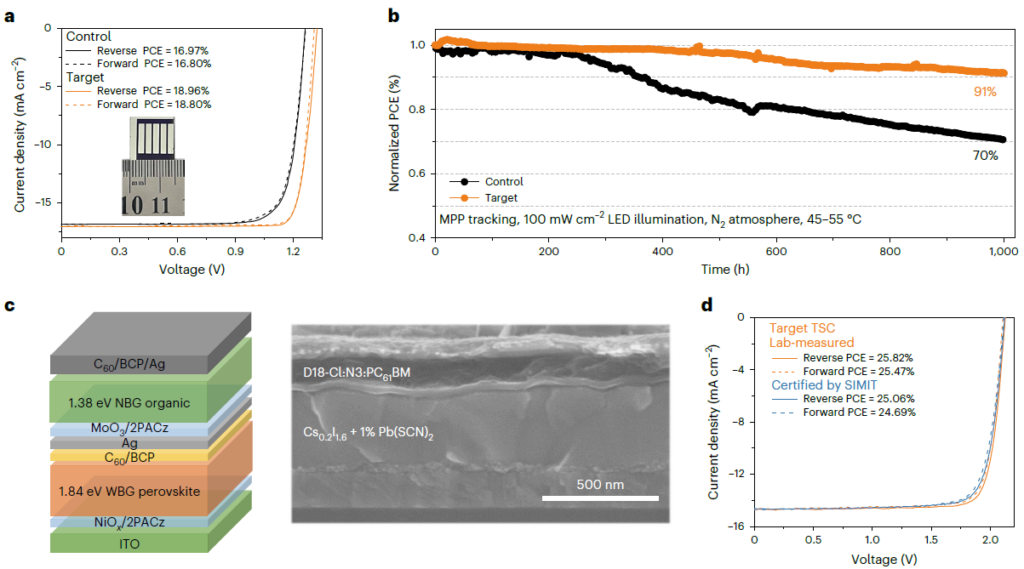The development of perovskite/organic tandem solar cells with an impressive power conversion efficiency of 25.82% (certified at 25.06%) and exceptional operational stability over 1,000 hours was recently published in Nature Energy
This success story is a testament to the power of collaboration and innovation. The project was led by the teams of Prof. Yaowen Li and Prof. Yongfang Li, long-standing cooperation partners with the FAU Solar (i-MEET and HIERN). A special acknowledgment goes to Fu Yang, who was instrumental in initiating and coordinating this collaboration. Fu, a former postdoc at i-MEET for over two years, is now an Assistant Professor at Suzhou University’s Department of Chemical Engineering and Materials Science and has recently been appointed CTO of a spin-off company focused on developing printed perovskite cells.
The research tackled a significant challenge in the development of wide-bandgap perovskite cells: halide phase segregation, which limits device efficiency and lifespan. By incorporating pseudo-halogen thiocyanate (SCN) ions into iodide/bromide mixed halide perovskites, the team demonstrated enhanced crystallization and reduced grain boundaries. These SCN ions not only improve the quality of the perovskite film but also block ion migration pathways, preventing phase segregation and energy loss.

The development of perovskite/organic tandem solar cells with an impressive power conversion efficiency of 25.82% (certified at 25.06%) and exceptional operational stability over 1,000 hours was recently published in Nature Energy
This success story is a testament to the power of collaboration and innovation. The project was led by the teams of Prof. Yaowen Li and Prof. Yongfang Li, long-standing cooperation partners with the FAU Solar (i-MEET and HIERN). A special acknowledgment goes to Fu Yang, who was instrumental in initiating and coordinating this collaboration. Fu, a former postdoc at i-MEET for over two years, is now an Assistant Professor at Suzhou University’s Department of Chemical Engineering and Materials Science and has recently been appointed CTO of a spin-off company focused on developing printed perovskite cells.
The research tackled a significant challenge in the development of wide-bandgap perovskite cells: halide phase segregation, which limits device efficiency and lifespan. By incorporating pseudo-halogen thiocyanate (SCN) ions into iodide/bromide mixed halide perovskites, the team demonstrated enhanced crystallization and reduced grain boundaries. These SCN ions not only improve the quality of the perovskite film but also block ion migration pathways, preventing phase segregation and energy loss.